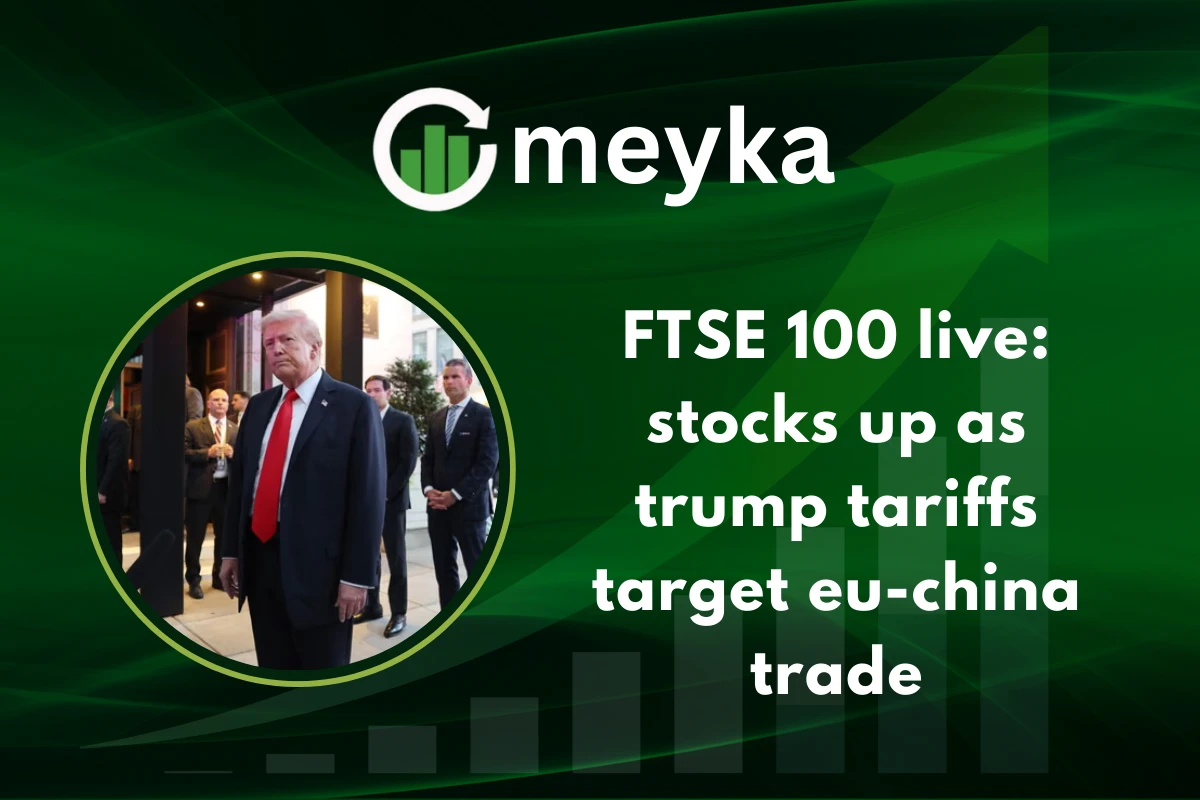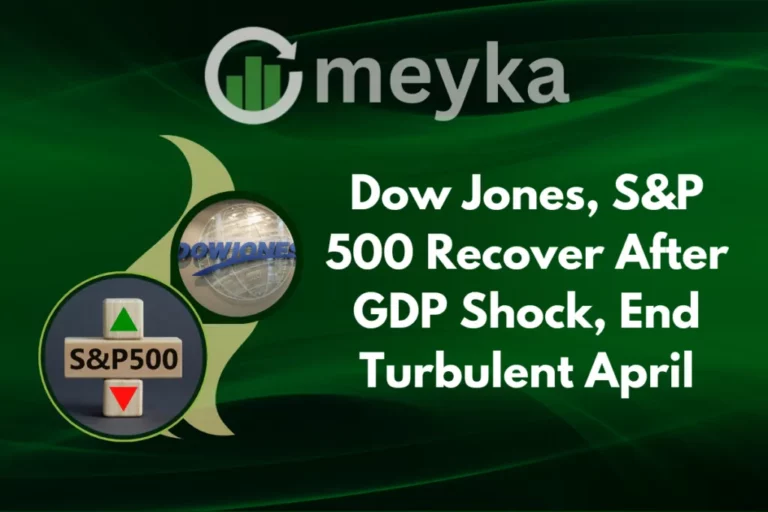FTSE 100 Live: Stocks Up as Trump Tariffs Target EU-China Trade
London’s FTSE 100 climbed as markets reacted to fresh headlines about President Trump urging tighter trade measures that could reshape EU-China Trade flows. Investors initially priced the news as a complex mix: possible supply disruptions that lift commodity and energy firms, coupled with short term safe haven buying as trade policy uncertainty grows.
Why are stocks higher even as tariffs escalate? Traders are moving into sectors perceived to benefit, while pricing in a longer period of uncertainty.
EU-China Trade tensions explained
The latest flare up comes after reports that President Trump asked EU officials to consider steep tariffs on certain trading partners to pressure geopolitical adversaries, a move that could touch trade routes between the European Union and China.
This proposal has amplified worries about higher import costs and disrupted supply chains, which in turn changes the profit outlook for exporters and importers alike.
What does this mean for EU-China Trade? It raises the risk that goods crossing between Europe and China face new levies or retaliatory measures, increasing costs for manufacturers and consumers.
How Trump’s tariffs affect global markets and EU-China Trade
Tariff threats tend to have two immediate market effects: they push up prices for commodities and logistics sensitive names, and they spur rotation into defensive and financial stocks that benefit from higher rates or energy prices. At the same time, companies with heavy exposure to Chinese imports may see margin pressure if costs cannot be passed on.
Traders now watch which goods would be targeted, how quickly any measures could be implemented, and whether the EU will align with U.S. demands or resist, which would influence the trade dynamic between Europe and China.
FTSE 100 performance and EU-China Trade impact
The FTSE 100’s rise reflects a sectoral split. Energy and mining names were among the early gainers, as traders priced in the potential for higher commodity prices and supply vulnerability. Banks also rallied on expectations of resilient corporate fees amid market churn, while select retailers lagged because higher tariffs could lift input costs. Overall, the index’s gains masked underlying volatility, with winners and losers determined by exposure to EU-China Trade and global supply chains.
Why are investors reacting positively despite the risk? Some see tactical opportunities to buy into commodity and export positions that could benefit from trade disruption.
Wall Street and global stock market reactions
U.S. markets showed mixed moves as traders digested the tariffs story alongside domestic economic data. When trade tensions spike, Wall Street often swings between risk off and selective buying episodes, depending on whether investors view the measures as temporary leverage or the start of a protracted trade standoff.
European markets overall showed resilience, partly because some London listed firms derive strong earnings from natural resources and international operations that can benefit from higher global commodity prices.
Impact on European exporters and Chinese imports
Exporters to China could face higher costs for logistics and tariffs, particularly in sectors like electronics, automotive parts and certain consumer goods. Conversely, European commodity exporters may benefit if China pivots to alternative suppliers or if prices rise.
Importers reliant on Chinese manufacturing face a squeeze unless supply chains are rerouted or tariffs are absorbed.
What does this mean for trade flows? We may see near term rerouting, sourcing shifts, and a renewed focus on regionalisation of supply chains away from long haul links between the EU and China.
Key sectors driving FTSE gains: energy, banking, retail
Energy stocks, including oil and gas majors, rose on the prospect of tighter global supply and firmer oil prices. Mining companies with exposure to industrial metals also attracted flows amid worries about supply chain shocks.
Banks gained as investors priced continued fee activity and an expectation that firms will seek hedging and trade finance services; retailers and consumer goods names were more mixed. The interplay between sector winners and losers highlights how EU-China Trade policy ripple effects are uneven and sector specific.
Short-term volatility versus long-term risks
Markets can rally on headlines then recalibrate as details emerge. Short term, investors may profit from sector rotations; long term, persistent tariffs would raise costs across the economy, slow growth, and potentially trigger broader policy responses.
Central banks and governments will be watching for inflationary effects in key economies, because trade taxes can feed into consumer prices and complicate monetary policy choices.
What risks lie ahead for global markets? The main downside is a creeping fragmentation of trade that raises costs and reduces global growth momentum.
Social media and expert commentary
Market commentaries and trader feeds reflected the rapid reaction. Journalist Andrew Duncan posted that European markets and the FTSE were higher as Mr Trump called for tougher tariffs, capturing immediate investor sentiment.
Andrew Duncan tweeted, “FTSE 100 and European markets higher as Trump asks EU to levy 100% tariffs on China and India.”
Such posts show how market participants use social platforms to share on the move takes that can shape intraday flows.
What this means for the future of EU-China Trade relations
If the tariffs push continues, we may see deeper structural shifts in global supply chains and trade partnerships, with firms accelerating diversification away from concentrated Asia links. For EU-China Trade, that could mean slower growth in bilateral goods flows, renegotiated procurement strategies, and a heavier role for regional trade partnerships.
Policymakers will face pressure to balance geopolitical aims with the economic costs of trade fragmentation.
How should investors prepare? Focus on companies with robust pricing power, diversified supply chains, and exposure to sectors that benefit from higher commodity prices or stronger domestic demand.
Conclusion
Today’s market moves show how headlines on EU-China Trade can lift certain corners of the FTSE 100 even as they raise broader economic concerns. The immediate winners are sector specific, while the wider picture is one of growing uncertainty for cross border trade and supply chains.
Investors should watch policy developments closely, assess company level exposure to tariffs, and prepare for heightened volatility as the implications of any tariffs become clearer. The markets are voting with their feet for now, buying selective exposure, but the long term story will depend on whether tariffs remain a bargaining posture or become persistent economic policy.
FAQ’S
Investors expect tariffs to benefit certain UK-listed exporters and energy firms, lifting overall market sentiment.
The tariffs raise costs on European exports and Chinese imports, reshaping global trade flows and competition.
Energy, banking, and retail stocks led the rally as investors looked for safe havens in volatile conditions.
They could trigger supply chain disruptions, inflationary pressures, and long-term uncertainty in trade relations.
Analysts suggest Europe and China may strengthen bilateral ties or seek new partners to offset US pressure.
Disclaimer
This content is made for learning only. It is not meant to give financial advice. Always check the facts yourself. Financial decisions need detailed research.






